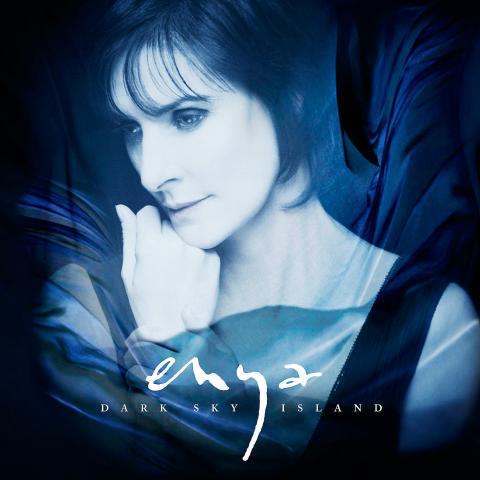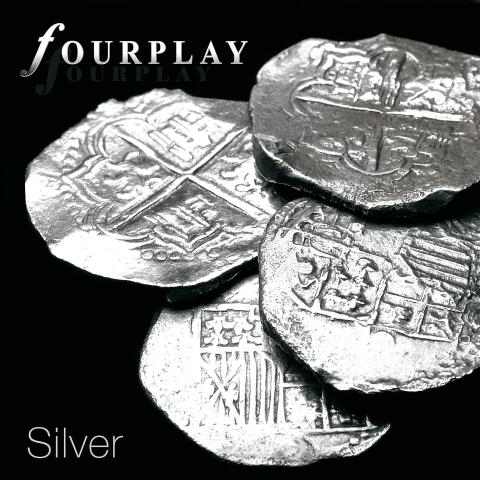Dark Sky Island, Enya, Warner Bros
“Only change is here to stay,” Enya sings in The Humming, a song about geological cycles of creation and disintegration that opens her new album, Dark Sky Island. But constancy, not change, is what Enya’s music provides. On Dark Sky Island, as always, Enya offers plush serenity and the familiarity of sounds she has been using since her 1988 album, Watermark. She sings in her feathery voice amid orchestras of sampled strings, stolid keyboard arpeggios and choirs of her overdubbed vocals. She’s eternally consonant, bringing melodies that are steeped in hymn, lullaby, waltz, Baroque opera and Celtic tradition, all radiating a free-floating reverence.
After seven years between studio albums, Enya and her collaborators — producer Nicky Ryan and lyricist Roma Ryan, who are married — emphasize continuity and comfort on Dark Sky Island. The lyrics often mention homecomings; the music is a warm bath. Using a string ensemble to define the beat, Echoes in Rain deliberately alludes to Orinoco Flow, Enya’s international hit from 1988 — though Echoes in Rain trudges where Orinoco Flow danced. (Much of the album is held back by rhythms that are all too foursquare.) For more dedicated Enya devotees, The Forge of the Angels and The Loxian Gates continue a thread begun on previous albums, a legend of a migration through space by the Loxians, Celts of the future with a language invented (and translated back) by Roma Ryan.

The album’s better moments don’t need cross-references. Even in the Shadows moves as close as Enya gets to 1960s pop, with a steady, explicit beat and lyrics that cope with a breakup. Sancta Maria is a euphoric waltz with Enya singing the title again and again in a tinkling, gleaming production like a gigantic virtual music box.
There are also two slow, crystalline ballads of personal loss: I Could Never Say Goodbye, a plaint of separation, and So I Could Find My Way, an elegy for a loving parent or mentor that could become a funeral staple. The melodies sound both ancient and intimate, and the production steps back to let them breathe.
— Jon Pareles, NY Times News Service

Mutant, Arca, Mute
For Venezuelan electronic-music producer Arca, a note is a living cell, and rhythm, pitch and tone are organic processes. He creates blooms and warps in his own arrangements of beats or melodies, and likewise he finds the bloom and warp in a sample of any outside sound, human-made or not. Then he’ll make it supersized and dissipated and unrecognizable. Depending on your hearing, any small segment of his music is moving toward something beautiful or ugly, but it’s always moving purposefully, letting you know that it’s not finished.
That constant now-ness must be part of Arca’s appeal to the artists who have sought his collaboration in the last few years, like FKA twigs, Bjork and Kanye West: He erases old boundaries and forces you to hear as if other kinds of music don’t exist. (He didn’t drop out of the sky, of course: He has spoken about learning aesthetics from Aphex Twin albums and the live DJing of Venus X, Shayne Oliver and Total Freedom, among other sources.) His sounds make you feel like you’re walking into the future, but of course they’re not the future — they’re just the microscopic present rendered in bold and aggressive gestures, aided by software.

Increasingly, his own work doesn’t really propose variants on hip-hop or house or dark-ambient — it’s both more stretchy and more obdurate than any of those definitions. His new album, Mutant — his second full-length, after last year’s Xen — comes from a wordless, abstract, deep-inside-the-head place. It contains tunefulness and noise in 20 shortish tracks and doesn’t really put a wall between one state and the other.
And so in Sever and Gratitud, tracks with more harmonic movement than most here, he uses a glassy, zither-like strumming sound with heavy reverb. Else features a sound like a koto. (Presumably he’s using a keyboard, but those three pieces sound like they could have been played by Pat Metheny on his 42-string Pikasso guitar.) Sinner is mostly metallic, machine-like clangor; Extent sounds like the bowings of an imaginary string orchestra, punctuated by open space. He starts from sounds that exist in the world and moves into many more that don’t.
There’s plenty of drama here: All of Arca’s gestures have drama. But the downside of the now-ness, the resistance against static definition, is lack of resolution. Mutant is hard to listen to, sometimes in a salutary way and sometimes not. Much of it feels like magnificent research, or a series of proposals: ways to think about sound rather than a finished work. That might even be the point, though I doubt there’s only one.
— Ben Ratliff, NY Times News Service
Silver, Fourplay, Heads Up
When you pause to celebrate a milestone for a beloved band or album, you’re also potentially peering back toward an earlier version of yourself. Smooth jazz doesn’t encourage such reflection, not because the music isn’t cherished but because the genre has changed so little over time, despite a series of disruptions for its industry. There’s something to admire in this steadiness, even if it suggests complacency, or a form of stasis.
Fourplay first took shape in 1990, after its members worked on an album by the pianist Bob James. A highly proficient collective originally with James on keyboards, Nathan East on electric bass, Harvey Mason on drums and Lee Ritenour on guitar, the group found instant success in a propitious era for crisply articulated instrumental pop. Its self-titled debut album sold more than half a million copies, becoming something like a classic in the style.
Silver commemorates Fourplay’s 25th anniversary by adhering to form. It’s a sleek but relaxed album that highlights the band’s strengths as a rhythm section. So a track like Sterling involves a billowing pulse and an aerated melody, while Aniversario, by East, deftly flirts with Brazilian funk. Quicksilver, by Chuck Loeb, the group’s current guitarist, features a springy melodic hook over a four-on-the-floor beat.
Beyond the on-the-nose song titles, the album acknowledges band history by way of inclusion: Ritenour resurfaces on one track, and his initial successor, Larry Carlton, appears on a lite-funk tune called Silverado. Notwithstanding the faint distortion on a tune called Silver Streak, the album steers clear of rough textures and dynamic tension.
But those were never part of the bargain, anyway. Fourplay’s members may delve into other areas — James and East just released The New Cool (Yamaha Entertainment Group), a mostly acoustic affair — but its style is clearly delineated. The band didn’t get this far by reinventing the wheel.
— Nate Chinen, NY Times News Service

May 26 to June 1 When the Qing Dynasty first took control over many parts of Taiwan in 1684, it roughly continued the Kingdom of Tungning’s administrative borders (see below), setting up one prefecture and three counties. The actual area of control covered today’s Chiayi, Tainan and Kaohsiung. The administrative center was in Taiwan Prefecture, in today’s Tainan. But as Han settlement expanded and due to rebellions and other international incidents, the administrative units became more complex. By the time Taiwan became a province of the Qing in 1887, there were three prefectures, eleven counties, three subprefectures and one directly-administered prefecture, with

It’s an enormous dome of colorful glass, something between the Sistine Chapel and a Marc Chagall fresco. And yet, it’s just a subway station. Formosa Boulevard is the heart of Kaohsiung’s mass transit system. In metro terms, it’s modest: the only transfer station in a network with just two lines. But it’s a landmark nonetheless: a civic space that serves as much more than a point of transit. On a hot Sunday, the corridors and vast halls are filled with a market selling everything from second-hand clothes to toys and house decorations. It’s just one of the many events the station hosts,

Among Thailand’s Chinese Nationalist Party (KMT) villages, a certain rivalry exists between Arunothai, the largest of these villages, and Mae Salong, which is currently the most prosperous. Historically, the rivalry stems from a split in KMT military factions in the early 1960s, which divided command and opium territories after Chiang Kai-shek (蔣介石) cut off open support in 1961 due to international pressure (see part two, “The KMT opium lords of the Golden Triangle,” on May 20). But today this rivalry manifests as a different kind of split, with Arunothai leading a pro-China faction and Mae Salong staunchly aligned to Taiwan.

Two moves show Taichung Mayor Lu Shiow-yen (盧秀燕) is gunning for Chinese Nationalist Party (KMT) party chair and the 2028 presidential election. Technically, these are not yet “officially” official, but by the rules of Taiwan politics, she is now on the dance floor. Earlier this month Lu confirmed in an interview in Japan’s Nikkei that she was considering running for KMT chair. This is not new news, but according to reports from her camp she previously was still considering the case for and against running. By choosing a respected, international news outlet, she declared it to the world. While the outside world